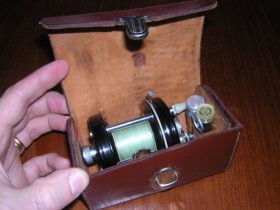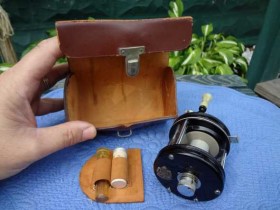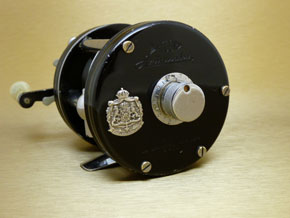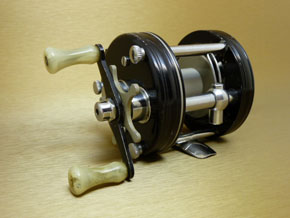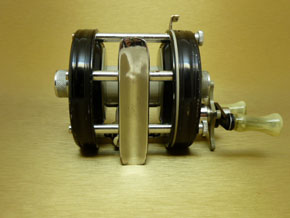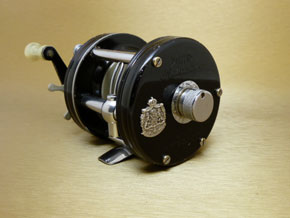Ambassadeur 5000 History
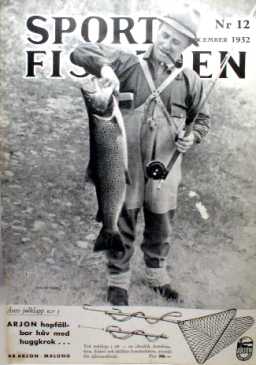 |
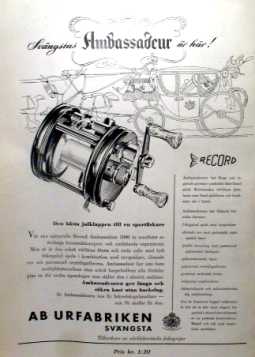 |
In November 1952, ABU advertized in the Magazine Sportfiskaren, an announcement that you could buy an ABUrfabriken Record 5000 for Christmas in 1952 .
|
No
1. Green, Red and black, were the first reels Göte
Borgström made.
Here are some pictures on
this reels right.
He produced a lot of them as samples.
I think it was minimum 100
off each.
1951-1952.
|
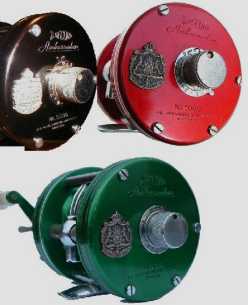 |
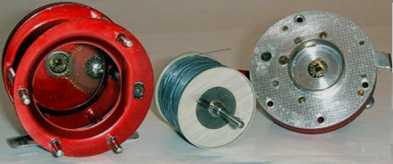
Thanks to Mikael Riseberg ( www.abu-record.com )
My friend Espen Olav Sjaastad from Norway,
Notes the following in regard to the Black Record 5000
Some of these black record 5000 reels were
among the very first Ambassadeurs ever produced, so I'll try to
piece together some of the story. As many will know, the Record
Ambassadeur 5000 was designed by Åke Murvall, starting in the late
1940s. The first units were produced in 1951 or 1952, marketing
began in the Autumn of 1952 and the reel was first cataloged in
1953.
The story of the black version begins with a trip to Stockholm to
test consumer preferences with respect to color. Here's how Len
Borgström tells it in his book
ABU
and Garcia: What Happened? (p. 59):
"Until this point, all reels had been either nickel- or
chrome-plated. Since the Ambassadeur was made of aluminum, it
suddenly became possible to manufacture reels in different colors.
We presented a variety of colour models and decided to let the sport
fishermen choose which color they preferred. In those days,
ABU often
participated in a Stockholm exposition, which was very well attended
by the general public. We displayed four different colors at the
exposition: red, black, gold and green. The visitors were asked to
vote on a color, which we would then use in production. By a large
majority, the voters selected the green; however, my father
preferred the red, so the first Ambassadeur reels produced were
red."
This story has been told and retold in coffee shops, books, and on
websites over the years. Everybody agrees about the red, black, and
green reels. Variation mostly concerns the fourth (and sometimes
fifth) color. Borgström, who should know, says gold. Others say
yellow, purple, or blue. The black reels come to auction fairly
regularly. The green reels are exceptionally rare. But I have never
seen even a photo of the "fourth color" reel, and no Swedish
collector or retired ABU
employee I have spoken to knows the present whereabouts of such a
reel.
There is disagreement about the numbers produced of these test
reels. Some say 20 of each color, others say 100, or something in
between.
On his Swedish website...
http://abu-record.se/index.php/1414570
...collector Mikael Risberg notes the relative "abundance" of black
reels compared to green reels; according to him, as many as five
black reels were traded in 2008 to 2009. Why the disparity?
Daniel Skupien, in Vintage
Fishing Reels of Sweden, offers one explanation (p. 70):
"Some of these are early prototypes used by
ABU in the
early fifties in a market study of color preferences. Others were
manufactured as special orders. It is rumored, for example, that a
number of black units were ordered in the mid-fifties by a car
dealership in the USA. It was intented that they would be thrown in
as a bonus with the pruchase of an automobile. The sale did not go
so well, however, and the remaining stock was returned to
ABU in Sweden.
Many years later, these reels found their way to a tackle shop in
Stockholm's Gamla Stan (Old Town) where local collectors picked them
up."
A further clue to the "proliferation" of black reels comes from
Borgström (p. 59):
"Only the conservative British continued to insist on black reels
the first few years. The thought of a red fishing reel by a fine
Scottish salmon river was a shock to them."
British erythrophobia might also explain why production of the black
5000 continued after "Record Ambassadeur" was changed to "ABU
Ambassadeur" (around 1957) and why
ABU also produced a black 6000.
What this means is that there are probably different versions of the
black 5000 around. The earliest test reels should have a polished
brakeplate and a gray starwheel; later versions should have a gray
brakeplate (ca 1953-1957) and a black starwheel (ca 1954-1957).
There might have been changes to the spool along the way. There
might even be black reels with the S.G. designation on the tailplate
(ca 1952-1953) or with a "neither Record nor
ABU" tailplate
(ca 1957), although I have never heard of any. And Risberg reports
that the reels sold in 2008 and 2009 had roman numerals (color
codes) scratched on the inside of sideplates and frame; these were
apparently absent on the first test reels.
The red reels were serialized from about 1956. Would any black reels
produced between 1956 and 1957 have been serialized? I don’t know.
It would, in any case, be interesting to see some pictures of your
reel and its details. I’m afraid I can’t be any more specific with
regard to expected price. Anything from the Greek economy to a
sudden outbreak of bidding fever could make a huge difference. If I
were to sell a reel like this, I’d send it to one of the established
tackle auction houses. For very valuable reels, ebay bidding is
suppressed by the presence of fraudulent sellers, so paying the
substantial auction house fees is quite possibly a sound investment.
Unfortunately, I have zero experience in terms of selling reels of
this calibre; others here might be able to offer better advice.
Shared Images of Black Record Ambassadeur 5000
More
images from Ron Elsenaar's fine Record 5000 Svart
